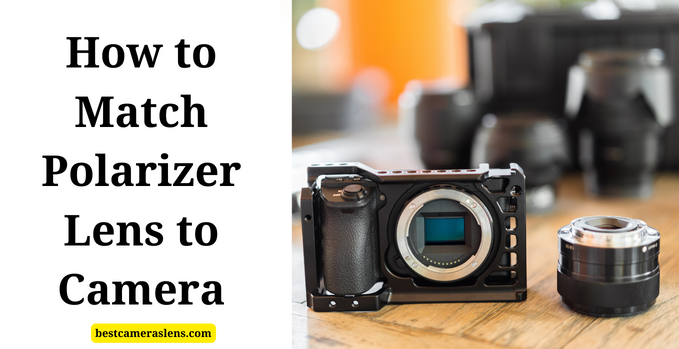Have you ever wondered how professional photographers capture stunning landscapes with vibrant colors and minimized reflections? The secret lies in using a polarizer lens.
This powerful tool can significantly enhance your photography by reducing glare, deepening blue skies, and saturating colors. However, not all polarized lenses are created equal, and matching the right lens to your camera is crucial for optimal results.
In this comprehensive guide, we will explore the ins and outs of polarizer lenses and provide you with valuable insights on how to choose the perfect match for your camera.
Understanding Polarizer Lenses
Before diving into the process of choosing a polarizer lens, let’s first understand what they are and how they work. Polarizer lenses are designed to filter out specific light waves that cause unwanted reflections and glare. They consist of two layers: a front layer that rotates, allowing you to adjust the polarizing effect, and a back layer that blocks specific light waves based on their polarization angle.
When light rays bounce off surfaces such as water or glass, they become horizontally polarized, resulting in intense glare. A polarizer lens selectively filters out these horizontally polarized rays, significantly reducing glare and enhancing color saturation.
Assessing Your Photography Needs
To find the ideal polarizer lens for your camera, it’s essential to assess your specific photography needs. Consider the following factors before making a purchase:
1. Camera Lens Thread Size
Polarizing filters come in various sizes to fit different camera models. The thread size is typically indicated on the front of your camera lens or mentioned in its specifications manual. It is crucial to match this thread size with the corresponding size of the polarizing filter you intend to purchase.
2. Outdoor vs Indoor Photography
If you primarily shoot outdoors, capturing landscapes or nature scenes, a circular polarizer (CPL) lens would be an excellent choice. CPL lenses not only reduce glare but also enhance the contrast between the sky and clouds, resulting in more dramatic and vibrant images. On the other hand, if you mainly photograph indoor subjects or portraits, a polarizer lens may not be as essential.
3. Budget Considerations
Polarizer lenses are available at various price points, ranging from budget-friendly options to high-end professional-grade filters. While it’s tempting to opt for a cheaper alternative, keep in mind that investing in a quality polarizer lens will ensure better image quality and durability over time.
Types of Polarized Lenses
Now that we’ve covered the key factors to consider when selecting a polarizer lens let’s explore the different types available:
1. Linear Polarizers (LP)
Linear polarizers were commonly used before the advent of autofocus cameras. While they can still be effective in certain situations, they are not recommended for most modern cameras as they may interfere with your camera’s autofocus and metering systems.
2. Circular Polarizers (CPL)
Circular polarizers are the most widely used type of polarizing filters today. They incorporate an additional layer that circularly polarizes light after it has been linearly polarized, making them compatible with all camera systems. CPL lenses provide consistent results without interfering with your camera’s autoexposure or autofocus capabilities.
Also Read: How to Remove a Polarizer From my Canon Camera Lens
Choosing the Right Polarizer Lens for Your Camera
With an understanding of what to look for when selecting a polarizer lens, let’s delve into some specific considerations:
1. Brand Compatibility
While most modern polarized lenses are designed to fit multiple camera brands, it is always advisable to check for compatibility with your specific camera model before making a purchase.
2. Quality and Construction
Opting for a high-quality polarizer lens ensures sharper images and minimal color distortion. Look for lenses with multi-coated optical glass elements as they provide superior light transmission and reduce lens flare and ghosting.
3. Rotating Mechanism
A smooth rotating mechanism is crucial for adjusting the polarizing effect according to your needs. Ensure that the polarizer lens you choose allows for easy rotation without any resistance or wobbling.
4. Additional Features
Some polarizer lenses come with added features such as anti-static coatings, water repellency, or scratch-resistant surfaces. While these features are not essential, they can enhance the overall durability and performance of the lens.
Caring for Your Polarizer Lens
Once you’ve found the perfect polarizer lens for your camera, it’s important to maintain its longevity and image quality by following some simple care guidelines:
- Always keep your polarizer lens clean by using a soft microfiber cloth or lens cleaning solution.
- Store your lens in a protective case or pouch to prevent scratches or damage.
- Avoid touching the front element of the lens directly with your fingers to minimize oil smudges.
- When not in use, keep your polarizer lens away from extreme temperatures and humidity.
- Regularly inspect your lens for any signs of wear or damage and replace it if necessary.
Conclusion
Matching a polarizer lens to your camera is an essential step toward elevating your photography game. By understanding how these lenses work, assessing your photography needs, and considering factors like thread size, type of photography, budget, brand compatibility, quality, construction, rotating mechanism, and additional features—you’ll be equipped with the knowledge necessary to make an informed decision.
